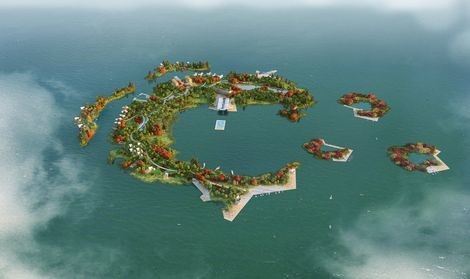Australians have won a swathe of awards at the World Architecture Festival (WAF) 2012 which got underway in Singapore from October 3.
Australian design teams have more than 50 projects shortlisted in the 2012 awards.
The Darling Quarter, in Sydney, Australia, designed by Francis-Jones Morehen Thorp (FJMT), is the winner of the offices category.
The project, which creates a new urban quarter on the edge of the city, was praised by the judges for its exciting form and massing and the creation of a landscape that is accessible to the public.
The project’s "exemplary corporate social responsibility" and interactive LED facade, programmable by the public, were also commended.
“We created an office building designed to engage with street life,” says Richard Francis-Jones, Design Director of FJMT. “Darling Quarter developed out of a flexible idea that blurred the boundaries between dedicated work spaces and public place, with restaurants, ground floor retail and spaces for children.”

Darling Quarter. Photo: John Gollings
Martin no. 38, a development in Singapore designed by Kerry Hill Architects, has won the housing category.

Martin no. 38
The judges also highly commended Common Ground Sydney by Hassell in the housing category.
The Royal Children's Hospital in Melbourne, Australia, designed by Billard Lecce Partnership with Bates Smart, is the winner in the health category.
The judges described it as an innovative project in healthcare. 'It successfully removed the stigma of hospitals,' they said. 'It blends with the environment and especially the park, at the same time representingan iconic architecture.'
The Shearer's Quarters House in Australia designed by John Wardle Architects, has taken the prize in the villa category.

The house is on the site of an old shearing shed in North Bruny Island, Australia.
The judges said, 'This house distinguished itself for three other projects we felt almost worthy of an award because of its deeper evolution from research into the history and specificity of the site and region. The research resulted in a deceptively simple spatial and three-dimensional external outcome in which we could detect many layers of meaning.
Hassell has won the 'Future projects - competition' category with its design for the rejuvenation of Perry Park in the Sydney suburb of Alexandra.

Perry Park
The judges said of the design, which was the runner-up in a competition, that it was 'a very well-developed scheme. It showed an intelligent interrogation of and response to the brief, and a sensitive and appropriate use of materials and architectural vocabulary that contributes to a sense of place.'
Hassell also won the 'Future projects - infrastructure' award with its Tianjin Binhai Transport Interchange.
The judges said, 'The project delivers a highly complex brief to integrate a transport interchange that links a very large high-speed-rail terminal, the metro and the bus. The structures are humanised and create spaces which are full of light and cleverly landscaped.

And the Man-Built Islands Dongqian Lake Concept Design in Ningbo, China by Hassell has won the 'Future projects - experimental' category.
The judges said this was 'a thoughtful elevation of the ambitions of the brief to unite tourism and sustainability with a clear and cogent response. It was a good low-tech solution in a contemporary format that produced a response to a specific cultural context.'
In the schools category, the judges highly commended the Infinity Centre in Keilor East, Australia by McBride Charles Ryan. They said, 'This project had an impressive verve and spirit. Its fluid form and use of contrasting materials to denote different spaces and functions humanises a complex programme.
Image sources: WAF
+Awards+%7c+Architecture+%26+Design&pu=/news/australians-wow-on-global-stage-with-wins-at-world&pt=_Article)
+Awards+%7c+Architecture+%26+Design&pu=/news/australians-wow-on-global-stage-with-wins-at-world&pt=_Article)